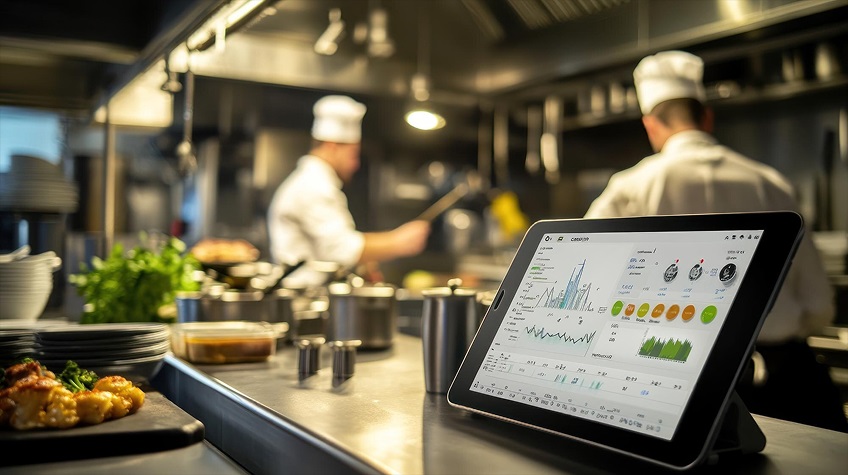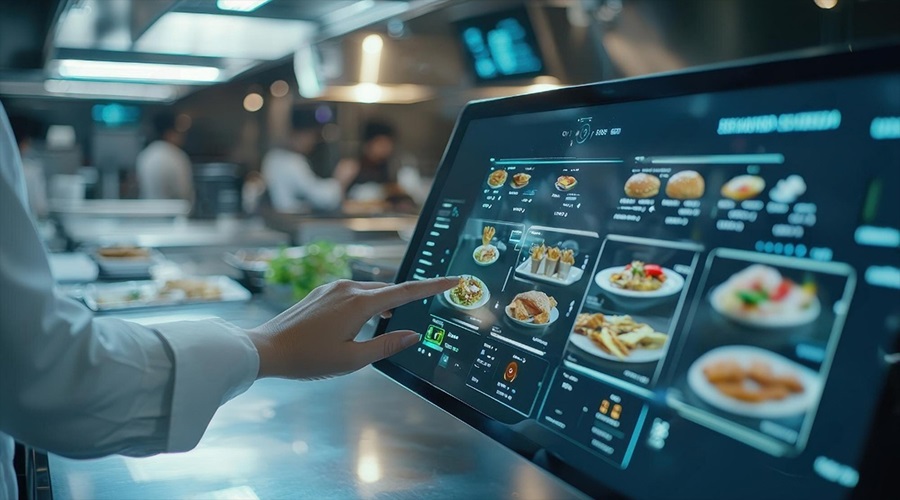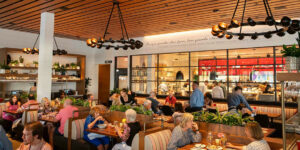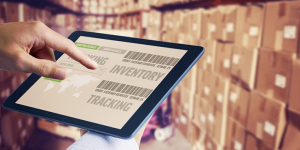
A good restaurant management software ensures smooth and speedy operations, reduces manual errors, and significantly enhances guest satisfaction. In this guide, find out how an experienced software development company tackles the development process from idea to launch.
It is not only the quality of food served in a restaurant that counts nowadays, but also how to handle orders and employees, inventory, payments, and customers to be served fast and efficiently. That’s where a restaurant management software enters the game.
Being a credible software development company, we know the specific requirements of the food service industry. All the steps towards developing a stable, scalable, and friendly restaurant management system using agile methodology are discussed in this comprehensive guide. Continue reading.
Steps to Develop a Restaurant Management Software

Step 1: Understand the Restaurant’s Needs
It is necessary to determine the objectives of the restaurant before a single line of code has been written. The requirements of different kinds of restaurants, such as fast food types, casual dining, cloud kitchen, or fine dining types, will be different.
Key Questions to Ask:
- Does the restaurant require online ordering?
- Does it matter to manage table reservations?
- Will this software work with POS or third-party delivery software?
- What is the number of users who will have access to the system?
By figuring out such needs, we, as a software development company, are able to create a solution that would fit just right.
Step 2: Define Core Features
The next step that follows after understanding the goals is drafting the core features. A proper restaurant management system consists of:
- Point of Sale (POS) System: The restaurant software is centered on the POS. It must facilitate simple billing, order splitting, e-receipts, and payment modes.
- Inventory Management: This option can monitor the ingredient level, remind staff when the supplies are low, and assist in reducing waste.
- Table Management: Reservation, waiting lists, and table occupancy would be handled in real-time by use of an illustrated layout of tables.
- Menu Management: Dynamic digital menus will enable you to alter items, prices, or combos across various locations instantly.
- Staff Management: Control check-ins, organize shifts, payroll, and performance in one place.
- Customer Relationship Management (CRM): Collect customer details, follow-up visits, reward loyalty, and implement one-off campaigns.
- Reporting & Analytics: Real-time dashboards and detailed reports can also help a manager make the right decisions.
- Online Ordering & Delivery: Empower customers to order through the website or application, and track delivery.
Being a professional software development company, we often suggest beginning with the basic functions and extending them gradually.
To ensure your restaurant management software is built efficiently and scales with your business, it’s often worth partnering with experienced nearshore developers. This approach allows you to access skilled engineering talent across different time zones, streamline collaboration, and reduce development costs without compromising on quality.
Step 3: Choose the Right Tech Stack
Your selection of tech stack will affect the speed, safety, and scale of your software. The usual stack can differ partly because of the size of the restaurant business and how complex it is, but this is what we typically have:
- Frontend: React.js, Angular, or Vue.js for responsive UI
- Backend: Node.js, Python (Django), or PHP (Laravel)
- Database: MySQL, PostgreSQL, or MongoDB
- Cloud & Hosting: AWS, Google Cloud, or Azure
- Mobile: Flutter or React Native for Android/iOS apps
- APIs: Payment gateways, GPS tracking, third-party delivery apps
We enable you to select the right stack that takes your business performance, budget, and future expansion into account with the help of professional developers.
Step 4: Design the User Interface
The interface must be smooth and friendly. Since restaurant employees are usually under a heavy workload, and hence the software should be user-friendly with minimal training.
Best UI/UX Practices:
- Apply clean icons and buttons to perform short actions.
- Minimize the screen architecture of concentrated textures.
- Make it mobile compatible for tablets and smartphones.
- Visualize data in dashboard analytics using charts and graphs.
Step 5: Develop and Test
Now it is time to create the software. We normally adopt the Agile methodology to divide development into smaller sprints. This makes it more quickly responsive and adaptable.
Development Process:
- Set up the database and back-end logic
- Build the admin, staff, and kitchen front end
- Incorporate APIs (payment, delivery, etc.)
- Develop the mobile application (if necessary)
At each step, there is testing, unit testing, system testing, and user testing so that the product performs perfectly well in a restaurant setting.
Step 6: Deploy and Launch
When development and testing are done, we arrive at the stage of deploying software to a client server or a cloud platform. The software development team assists with:
- Installation of the software on devices (POS terminals, tablets)
- Setting user roles and authorisations
- General importing of menu and customer data
- Training and onboarding the staff
Step 7: Maintain and Improve
Deployment does not end the job. Periodic updates should be implemented to make it more secure, introduce more features, and eliminate bugs as per the response of users. Maintenance packages used by a good software development company to rectify bugs, issue updates, and add features as the restaurant expands also help solve the problem. Post-launch services are the 24/7 technical assistance, system health checks, data backups, and recovery plans.
Benefits of Restaurant Management Software
1. Time Saving:
Restaurant management software includes automation of all daily activities such as order taking, billing as well and reporting. Employees use less time on manual activity and more on service. This productivity can accelerate the work and minimise mistakes that enabling a faster production and improved customer satisfaction.
2. Cost Saving:
The software assists in waste reduction and unnecessary ordering, due to real-time inventory tracking and expense monitoring. It tracks the cost wastage and helps to make wiser buying choices. It assists the restaurants in managing their expenditure and increasing profitability without compromising quality or services.
3. Better Customer Experience:
Online menus, faster billing, as well as reward schemes enhance the dining experience. The software can tailor the service in line with customer choices and their orders. Your happy customers will tend to come back and even refer to friends and family members.
4. Real-Time Insights:
Live dashboards offer immediate access to information on sales, staff, and performance. These observations aid owners in making sound decisions in a short time. The software transforms the data into best-selling products and plans of action to be used throughout or over peak hours.
5. Remote Access:
Systems based on the cloud allow the managers to view operations remotely. Regardless of whether you have a single outlet or hundreds of outlets, you can control menus, staff, and reports remotely. This facility means easy management of restaurants, even when you are not on the premises.
Key Challenges and How to Overcome Them

Like any tech initiative, developing restaurant management software has its issues.
| Challenge | Solution |
|---|---|
| Complex Workflow Mapping | Requirement of detailed analysis and process documentation |
| Staff Resistance to Change | Offer a user-friendly design and staff training |
| Integration with Current Systems | Utilize APIs and middleware solutions |
| Budget Restrictions | First, prioritize the features of the MVP (Minimum Viable Product) |
| Data Security | Use best practice encryption, access controls, and backups |
Contact Us Today!
Custom restaurant management software is not a luxury anymore; it has become a necessity to invest in it. It enables restaurants to flourish in a competitive environment, whether through streamlining operations, creating a customer experience, etc.
We are a professional software development company specializing in the development of custom-made software solutions for restaurants of all sizes. Whether you are operating only one cafe or have a franchise of restaurants, we will design a system that suits your operations and targets.
Are you ready to change your restaurant business? Contact us today, share your vision, and we will be able to transform your vision into a highly efficient and easy-to-use software solution that delivers positive outcomes.






